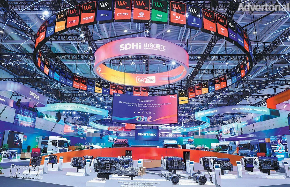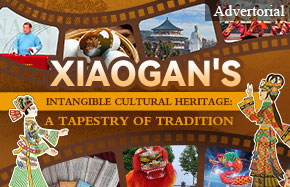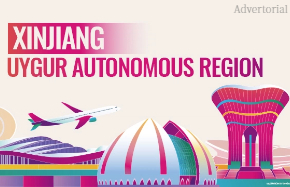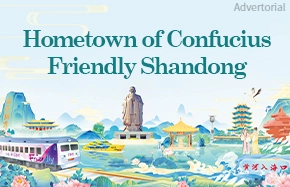Thematic activities commemorate archaeological discovery of Terracotta Warriors and Horses

A launching ceremony of thematic activities was held on Friday to mark the 45th anniversary of the archaeological discovery of the Terracotta Warriors and Horses of the First Emperor of the Qin Dynasty (221-207 BC).
The Emperor Qinshihuang’s Mausoleum Site Museum, located in Lintong district, Xi’an, Shaanxi province, also set the activities to celebrate its own 40th anniversary.
The pits of Terracotta Warriors and Horses in the Qin Dynasty are part of the huge burial system of the Emperor Qinshihuang (259-210BC) Mausoleum. The No.1 pit of Terracotta Warriors and Horses was discovered in 1974 and the museum was built and opened to the outside world in 1979.
The Terracotta Warriors and Horses of the Qin Dynasty are known as "the eighth wonder of the world" and "one of the great discoveries in the archaeological history of the twentieth century”.
In order to share this rare cultural feast with the public, 45 enthusiastic spectators were selected by the museum at the launching ceremony to witness the archaeological processes applied to the Terracotta Warriors and Horses of the Qin Dynasty.
Yuan Zhongyi tells the audience his research findings.[Photo provided to chinadaily.com.cn]
Mr. Yuan Zhongyi, a famous archaeologist and honorary director of the museum, told the audience about the archaeological excavation and research involved in preserving the national heritage.
Mr. Yuan Zhongyi (first from the left) does research work on the Qin Terra-cotta Warriors. [Photo provided to chinadaily.com.cn]
Yuan Zhongyi, a famous archaeologist and an expert who enjoys special allowance from the State Council, began to explore and study the pits of Qin terracotta figures and the cemetery of Qin Shihuang in 1974.
He led the excavation of terracotta warriors and horses pits Nos. 1, 2 and 3. In addition, he and his team also found more than 500 accompanying pits and tombs, such as bronze carriage and horse pits, stables pits and others, as well as millions of square meters of palace building sites and more than 50,000 cultural relics in Qinshihuang's cemetery.
In the past 45 years, the museum has played an active role in archaeological research, cultural relics protection, public education, open exhibitions, service to society and promotion of excellent Chinese culture. It has realized the cultural status and value of the Qinshihuang Mausoleum and the Terracotta Warriors and Horses as the spiritual symbol of Chinese civilization.
In 1987, UNESCO listed the Emperor Qinshihuang’s Mausoleum (including the pit of terracotta warriors and horses) on the World Heritage List.
Over the past 40 years, the museum has received more than 100 million Chinese and foreign visitors, including more than 200 heads of state and government.
The valuable cultural relics represented by the Terracotta Warriors and Horses of the Qin Dynasty have been exhibited in more than 80 cities in more than 40 countries and regions as envoys of international cultural exchange.

























